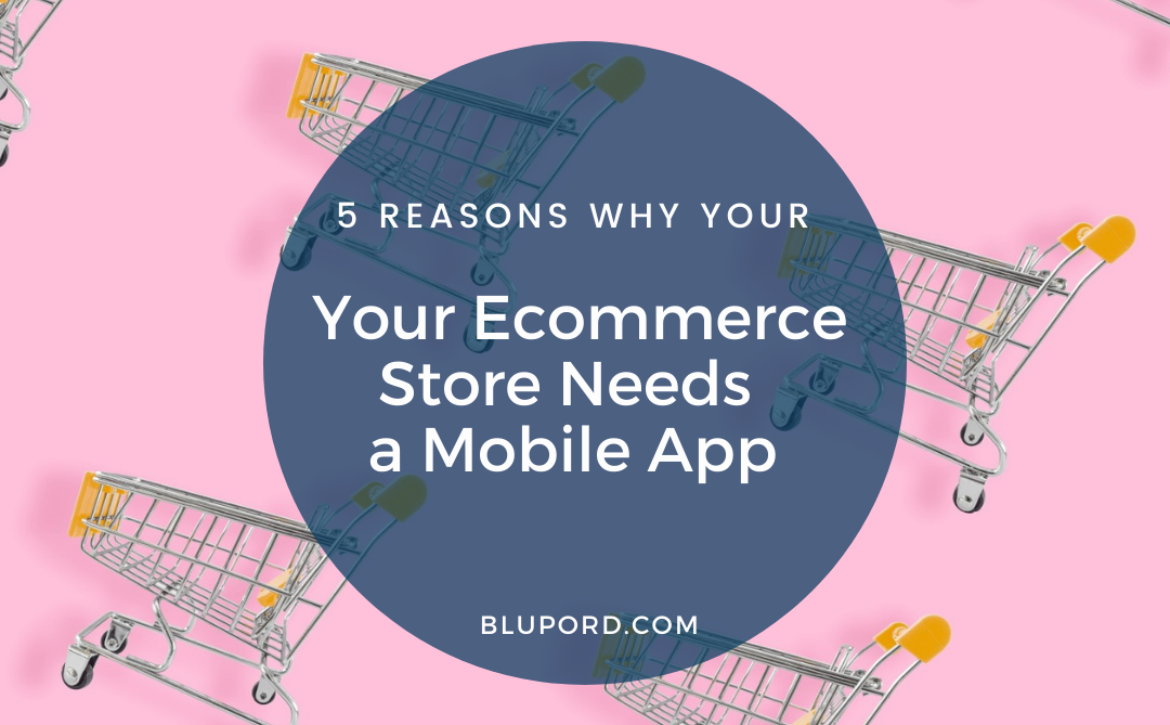Here is Why Your Ecommerce Store Needs a Mobile App
Whether to have Ecommerce websites and mobile commerce, or m-commerce, options aren’t an either/or circumstance. Both play various roles in the client journey and cater to various audiences. What is fundamental is that you don’t overlook mobile experiences while designing the ecommerce strategy for your business.
As per the Pew research, 8 out of 10 Americans are online shoppers, and 51% of them use mobile phones while shopping. If you aren’t utilizing mobile traffic, your business is more likely to miss out the important conversions even at the present time.
Whereas a responsive site is an excellent beginning point in your m-commerce journey, having a mobile app has different benefits than having a mobile website. Here is why your ecommerce business requires also a mobile-app as an add-on to your a mobile-responsive website:
1. Easy to use and provides better user experience
Even though you have a responsive website for your business, when the user logs onto it, the browser would always ask the user to sign into the account in order to move further for shopping. Whereas in mobile apps, the user information is already stored in the app and the users are required only to sign in once, while they download the app.
And since the users don’t require to sign in every time while shopping online, the ease of use is higher and the user satisfaction is also high. Mobile applications also help the users to switch between different tabs, making navigation and overall user experience simpler in comparison to that of the website.
2. Access to phone-native features
The phone’s native capabilities can be utilized using mobile apps, which is not possible in the mobile websites case. The integration of built-in smartphone features like GPS and cameras helps the user with enhanced user experience. Interactive shopping with the help of augmented and virtual reality is an app-only feature.
The other advantage is the fact native apps are available for offline use. The apps do acquire the space on the user’s device, they can be used even when the phone is not connected with the internet, resulting in an on-the-go shopping experience for the users.
3. Using mobile apps as a marketing channel
Mobile apps provide an opportunity to convey a unified omnichannel experience to the clients. Apps can permit social media integration that joins the different channels of client engagement. The client choices are saved within the app, promoting customized content being displayed to the potential clients.
Using geofencing and push notifications sent out to the user’s device when they are in proximity of the physical stores or in case of any special offer can also result in a more engaged customer base.
Using geofencing and push notifications sent out to the client’s device when they are in proximity of the physical stores or in case of any special offer can also bring about a more engaged client base.
4. Easy checkout with several payment options
Shopping-cart desertion is the biggest problem that retail businesses face. Whether in-store or on an ecommerce platform, clients are more likely to to leave the app if the checkout possesses complexity or problem.
Mobile apps eradicated friction from the checkout process by making it interactive. The global popularity of mobile wallets exists only because they help in fast processing of transactions. Features like fingerprint scanning and facial recognition help eradicate the problem from the checkout and payment process by allowing faster authentication.
5. Incorporation of advanced tech for interactive customer experience
Mobile apps and technology go along altogether. Incorporation of augmented reality in mobile apps is already taking place, with brands like IKEA and Sephora leading the transformation. The inclusion of AR/VR in apps makes them more interactive and results in potential client experiences.
Apps also take into account the integration of artificial intelligence in the form of chatbots to work with the client in searching for their favored things and getting them through the checkout. Customized shopping assistants that are controlled by AI algorithms would soon turn into the standard, making shopping simple and fun — as it ought to be.


